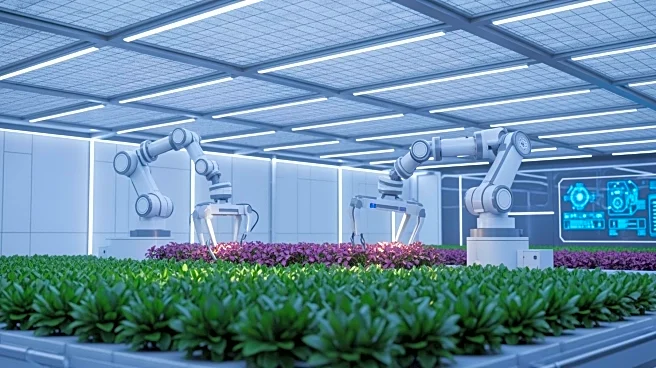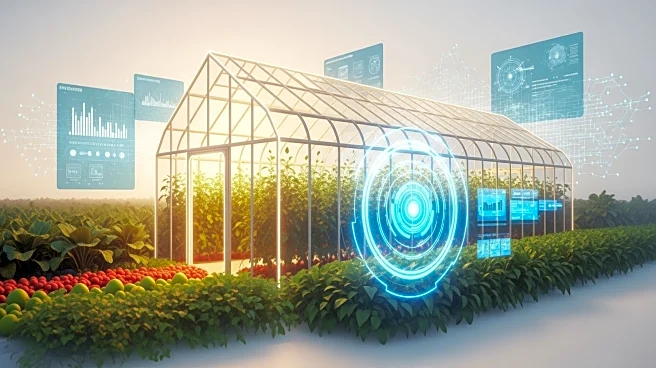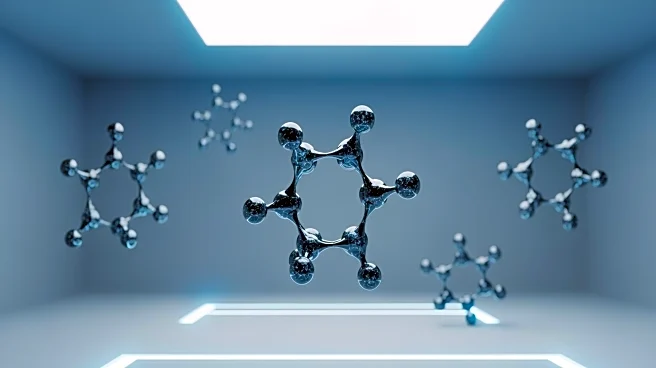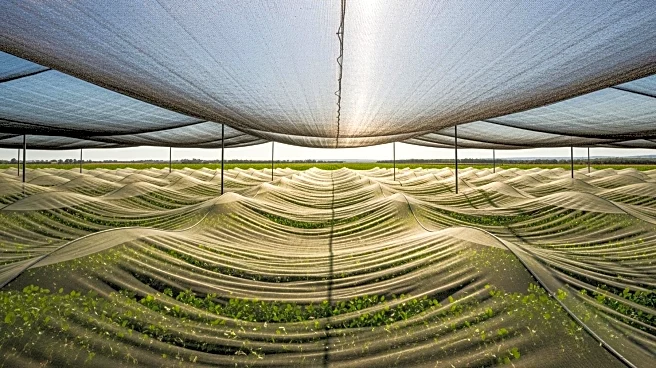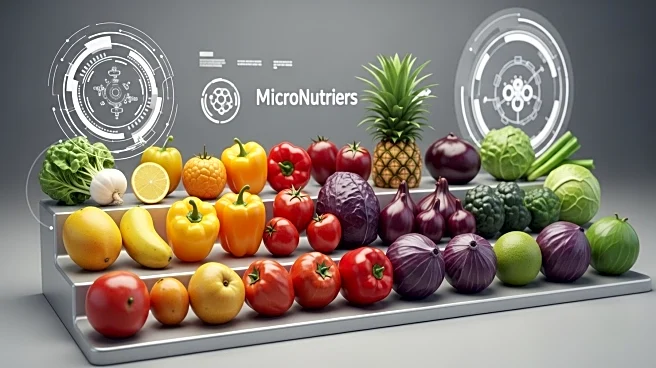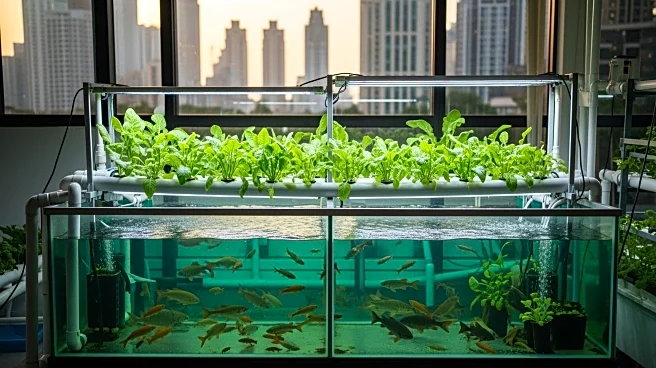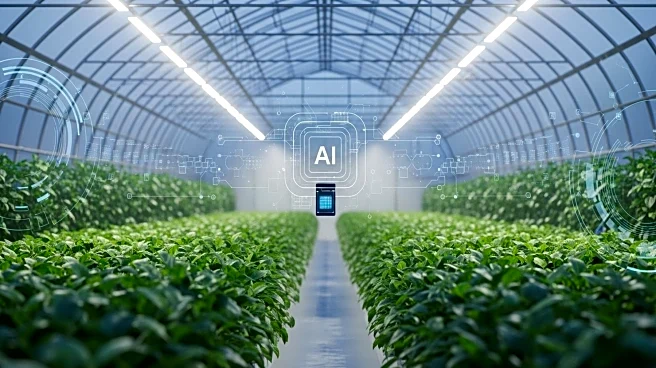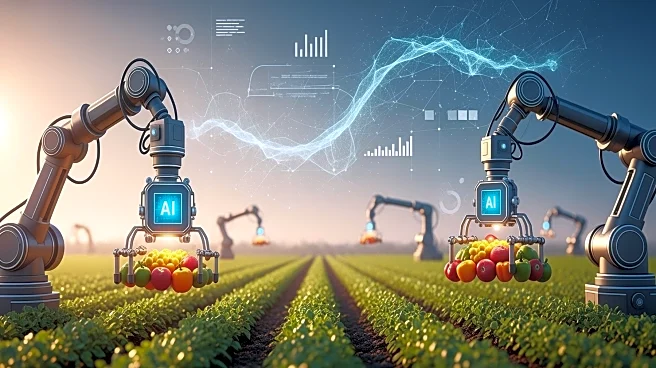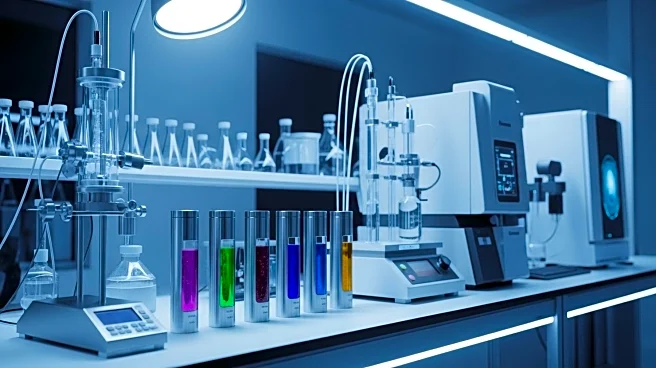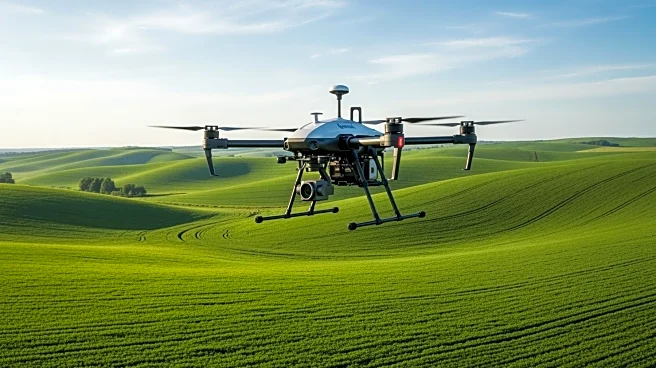What's Happening?
The Agriculture Shade Nets Market is experiencing significant growth, with its size projected to increase from USD 10.11 billion in 2023 to USD 15.21 billion by 2030, according to Verified Market Research. This growth is driven by the adoption of artificial
intelligence (AI) and automation technologies, which enhance efficiency, precision, and scalability in the sector. AI-powered analytics and predictive modeling are optimizing operations, reducing waste, and anticipating market trends. Automation is streamlining repetitive processes, minimizing human error, and accelerating production timelines. AI is also improving the precision of agriculture shade nets by enabling real-time monitoring and adaptive control systems, ensuring optimal light exposure for crops and enhancing growth conditions.
Why It's Important?
The integration of AI and automation in the Agriculture Shade Nets Market is crucial for advancing sustainable agricultural practices. By optimizing light exposure and reducing stress on crops, these technologies contribute to increased yields and resource efficiency. This growth in the market is likely to benefit farmers by improving crop health and productivity, while also supporting the development of more durable and efficient shade nets. The customization of shade nets to meet diverse agricultural needs further enhances their effectiveness, offering better protection and longevity. As the market expands, stakeholders in the agricultural industry, including manufacturers and farmers, stand to gain from improved product offerings and operational efficiencies.
What's Next?
The Agriculture Shade Nets Market is expected to continue its growth trajectory, with key players focusing on investment strategies, marketing, and product development to capitalize on emerging opportunities. The competitive landscape will likely see shifts in management and strategic approaches as companies aim to accelerate market growth. Regional markets such as North America, Europe, and Asia Pacific are anticipated to lead in market contributions, with accurate predictions about future growth potential and market share. The ongoing integration of AI in design and material selection processes will further enhance the quality and performance of shade nets, supporting the growth of healthier crops and sustainable agricultural practices.
Beyond the Headlines
The use of AI in agriculture shade nets not only improves crop yields but also represents a shift towards more environmentally friendly farming practices. By reducing waste and optimizing resource use, these technologies contribute to the broader goal of sustainable agriculture. The customization of shade nets based on AI simulations allows for better adaptation to specific climatic conditions, promoting resilience in diverse agricultural settings. This technological advancement may also lead to ethical considerations regarding the balance between automation and traditional farming methods, as well as the potential impact on employment in the agricultural sector.
